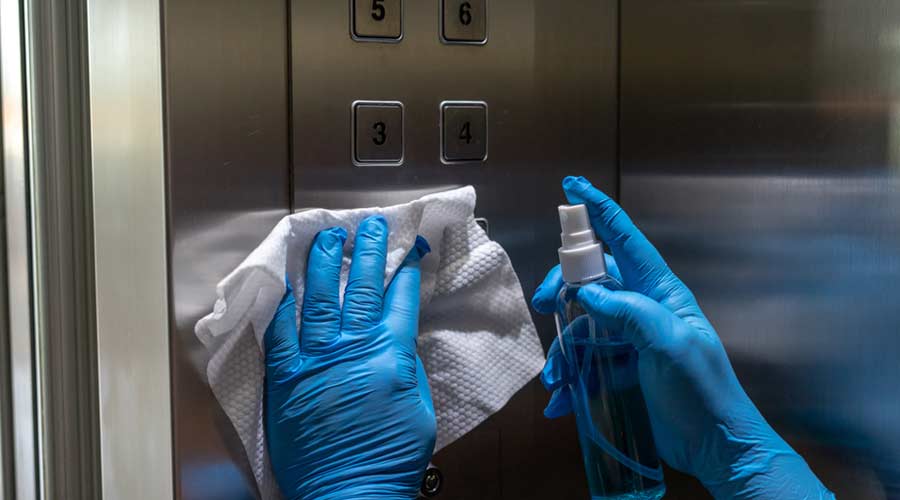
Maintaining clean and hygienic restrooms is not just a matter of aesthetics — it's a critical component of public health, customer satisfaction, and business reputation. In commercial settings, efficiency in restroom maintenance is essential to ensure consistent cleanliness without disrupting overall operations.
Clean restrooms earn a certain amount of respect from people who utilize public spaces. Hygienic restrooms can impact not just occasional users, but also the businesses and organizations responsible for maintaining them. Industry experts have developed a multitude of best practices that streamline the restroom cleaning process while meeting customer expectations and the highest standards of sanitation and safety.
Begin With the Budget
When contracting to meet customer expectations, it's vital that building service contractors (BSCs) balance those expectations with customers' cleaning budgets.
“The real elephant in the room when it comes to discussing the contemporary challenges of the commercial cleaning industry are the budgetary constraints put upon it,” says David Berthold, Vice President and Corporate Administration Health & Safety Officer at Performance Environmental Services, LLC, New Haven, Connecticut. Citing the COVID pandemic and the growing number of markets that have experienced considerable reduction in building occupancy in the years since, Berthold believes the result of this trend is that building ownership now expects the same (or even more) from their contractors for less money, and contractors are all too happy to oblige in order to retain the business.
“Many contractors find themselves facing an operational, if not a moral, dilemma concerning how to meet their obligations with fewer resources, and it is at this point that the industry needs to rise to the occasion of maximizing efficiencies not as a way to increase the bottom line, but as a means to keep the bottom line,” he says.
Jenny DeVolder, Director of Marketing and Corporate Programs at Service By Medallion, Mountain View, California, offers one solution to this challenge.
“Approach pricing and scope development with transparency and openly align customer budgets with industry best practices and market wages,” she says, adding that the gap between customers’ cleaning budgets and customers’ expectations can be a significant challenge.
“Absent a collaborative approach, contractors may apply workloading techniques to creatively staff cleaning programs and potentially offset additional cost by ideal staffing levels,” she adds.
Training and Scheduling
With a budget agreed upon, a framework of effective practices that can guarantee BSCs meet customers' expectations for restroom maintenance includes establishing clear cleaning protocols, developing and utilizing a cleaning schedule, prioritizing hygiene and sanitation, ensuring fully stocked supplies, training and empowering staff, and encouraging customer feedback.
Prioritizing training staff for consistency and efficiency is key to success for Christina Freer, CBSE, President, RCF Commercial Cleaning, Boise, Idaho. RCF has created standard procedures and checklists using laminated cards tailored to each client.
“We created them using a combination of industry standards, field experience, and supervisory input,” says Freer. “They’re updated quarterly — or sooner, if we recognize service needs or if the client needs to shift. They’ve been very helpful in achieving cleaning consistency.”
Freer says RCF adheres to Occupational Safety and Health Administration (OSHA) and U.S. Environmental Protection Agency (EPA) standards, both in terms of training and cleaning product choices. When necessary, ATP testing and random inspections by staff supervisors are used to help ensure quality.
DeVolder says Service by Medallion, implemented standardized practices at the site level, but tailors those processes and protocols to align service delivery with each specific site's needs.
“We also leverage technology to provide real-time prompts and guidance to our cleaning technicians, ensuring consistency and efficiency driven by data,” she says.
This enables the company to continuously refine their restroom cleaning practices as new tools and technologies emerge.
Along with established protocols and staff training, using time studies on task completion offers several key advantages that can significantly improve efficiency, quality, and cost-effectiveness.
Ben Walker, president at Walker Foundry, LLC, San Diego, finds the best method for estimating restroom tasks comes from using the “minutes per fixture” method. It is a way of quickly estimating the workload by fixture count (sink, toilet, urinal, shower head) and assigning that number an average of minutes that’s representative of all the tasks required to get the restroom clean.
“The baseline I always start with when implementing a new process is three minutes per fixture,” he says. “This can always be scaled up as workers familiarize themselves with routes through the building.”
Utilizing time studies allows for accurate scheduling, helping to determine how many staff are needed and how long each restroom should take to clean. This enables BSCs to avoid overstaffing by aligning team size with actual cleaning demands based on time data and also reduces idle time or under-staffing.
Products and Processes That Improve Restroom Cleaning

 Celebrating BSCAI's 60th Anniversary eBook
Celebrating BSCAI's 60th Anniversary eBook The Down and Dirty on Cleaning in Virus Season
The Down and Dirty on Cleaning in Virus Season How Surfactant Use is Expanding in Commercial Cleaning
How Surfactant Use is Expanding in Commercial Cleaning